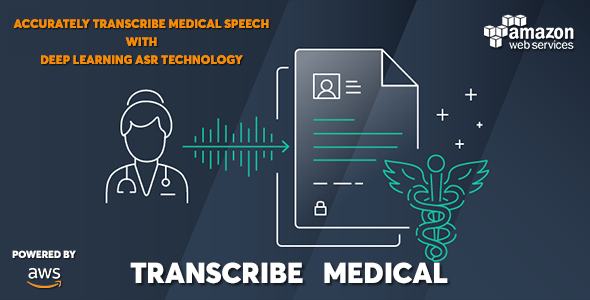


#AWS TRANSCRIBE SOFTWARE#
Now that I’ve introduced the software packs and the methodology of comparing the 4 transcription services, let’s get started. How much of a deciding factor this will be, depends on how large your budget is, and how important the other two metrics are. No matter if you are a small company or a well-established vendor moving the market, everyone cares about costs. But again, in some cases, companies that have large amounts of transcripts, they’ll be better off with a slightly less accurate, but much cheaper solution.

If the platform gives you a transcription that needs additional edits in punctuation and speakers, then that platform my friend hasn’t done much of the job for you. Very often the worth of the transcription platform is measured by its accuracy. Accuracy is paramount to a transcription platform.Some companies will be better off with a slower but more accurate solution. But in some cases, speed may not be the ultimate, deciding factor. Given enough time, everyone could transcribe a multimedia content, but the point of the existence of platforms like these is to make that time as short as possible. The speed of a transcribe platform is a crucial factor. Here are the different angles I’ll be covering: I’ll be covering the four providers from several different angles, so you can get a more comprehensive understanding of their value proposition for your specific needs. To help you choose the best transcription service provider, let’s make a little comparison between the four. They are all good players, however only one can fully respond to all of your specific needs. In this blog post, I’d like to dig a bit deeper and do better coverage of the 4 major transcription services: Amazon, Google, IBM, and Nuance. Just like hiring an army of workers to dig a perfectly straight ditch of a 1000 miles is not the best option, we need to start thinking of how machines can help. It’s too slow, too expensive, too prone to error, and too vulnerable to data leaks. At this pace, and a 9:1 ratio of transcribing multimedia files, human-powered transcription is simply impossible to keep up. In the past 2 years, we’ve produced 90% of all the data our civilization has. There, I introduced the idea that, with this pace of multimedia production, traditional, human-powered transcription services is not the solution. In one of my previous blog posts, I touched on the topic of AI-powered transcription services on the market.


 0 kommentar(er)
0 kommentar(er)
